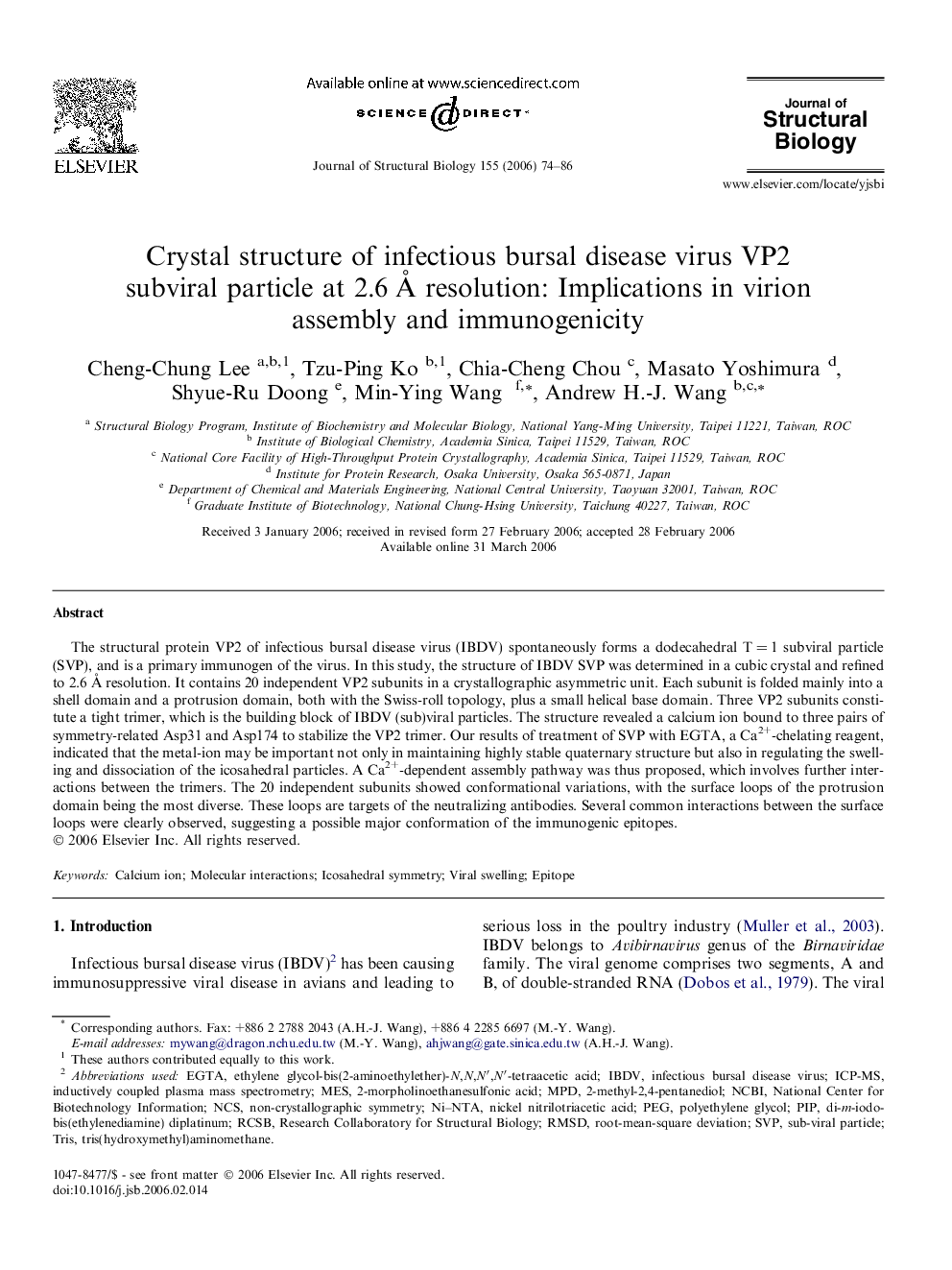| Article ID | Journal | Published Year | Pages | File Type |
|---|---|---|---|---|
| 2829417 | Journal of Structural Biology | 2006 | 13 Pages |
The structural protein VP2 of infectious bursal disease virus (IBDV) spontaneously forms a dodecahedral T = 1 subviral particle (SVP), and is a primary immunogen of the virus. In this study, the structure of IBDV SVP was determined in a cubic crystal and refined to 2.6 Å resolution. It contains 20 independent VP2 subunits in a crystallographic asymmetric unit. Each subunit is folded mainly into a shell domain and a protrusion domain, both with the Swiss-roll topology, plus a small helical base domain. Three VP2 subunits constitute a tight trimer, which is the building block of IBDV (sub)viral particles. The structure revealed a calcium ion bound to three pairs of symmetry-related Asp31 and Asp174 to stabilize the VP2 trimer. Our results of treatment of SVP with EGTA, a Ca2+-chelating reagent, indicated that the metal-ion may be important not only in maintaining highly stable quaternary structure but also in regulating the swelling and dissociation of the icosahedral particles. A Ca2+-dependent assembly pathway was thus proposed, which involves further interactions between the trimers. The 20 independent subunits showed conformational variations, with the surface loops of the protrusion domain being the most diverse. These loops are targets of the neutralizing antibodies. Several common interactions between the surface loops were clearly observed, suggesting a possible major conformation of the immunogenic epitopes.
